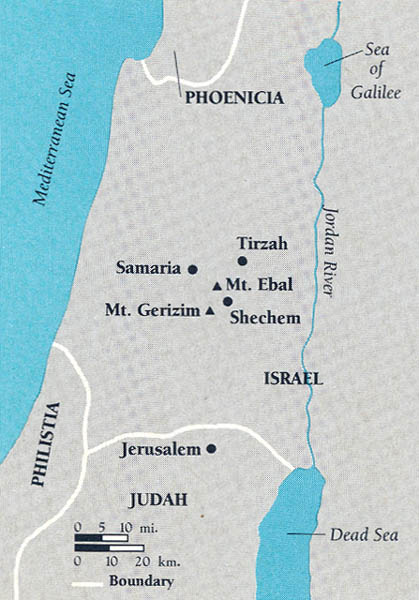
The drama unfolds in a mountain pass near Shechem, a city that is already ancient and venerated for its association with events in the lives of the patriarchs, Abraham and Jacob. Joshua has led the children of Israel across the Jordan River, and the 12 tribes are now ready to ratify a covenant establishing them as a loosely confederated nation.
Arrayed on the flanks of the mountain pass-with Mt. Gerizim to the southeast and Mt. Ebal to the northwest—are delegates from the 12 tribes of Israel—six tribes on one mountain, six on the other. They await the words of their priests. Standing in the valley around the Holy Ark, which contains the stones engraved with the Ten Commandments, the priests turn at a signal and face Mt. Gerizim. Loudly they invoke the blessing: “Blessed is the man who does not make a graven image,” and the six tribes on Mt. Gerizim respond as one, “Amen.” Then the priests turn and face Mt. Ebal and recite: “Cursed is the man who makes a graven image ….” “Amen” echoes across the pass from the six tribes on Mt. Ebal. And so it continues until the priests have intoned the 12 blessings and 12 curses and the tribes of Israel have responded “Amen.” By this covenantal ceremony, the 12 tribes become the nation of Israel. (See Deuteronomy 27:11–26; also Joshua 24:25.)
Already a library member? Log in here.
Institution user? Log in with your IP address.

